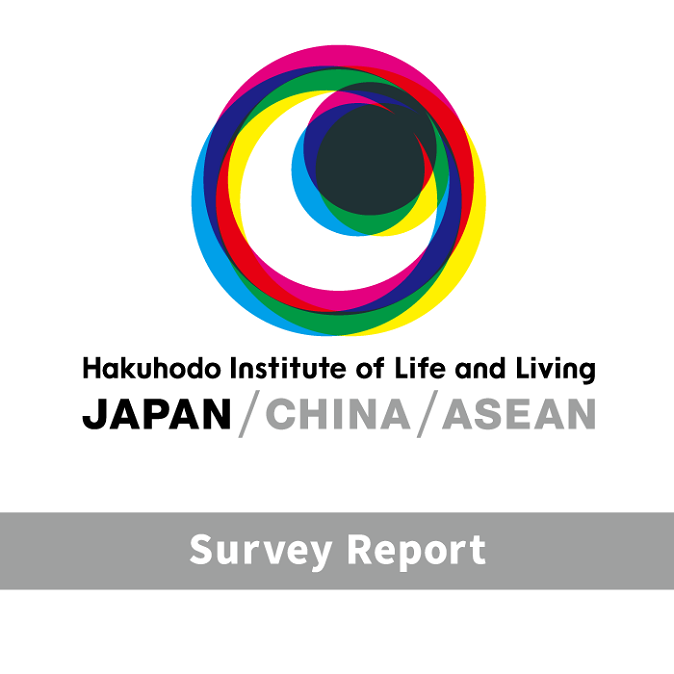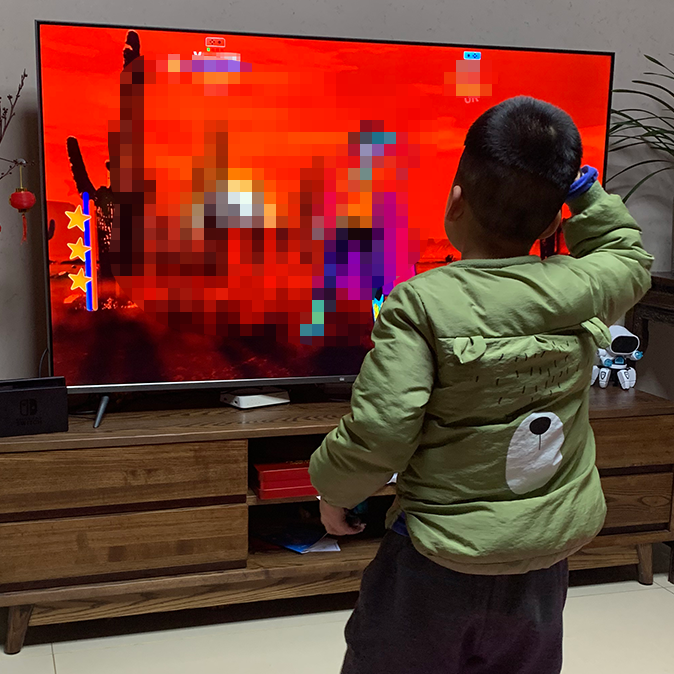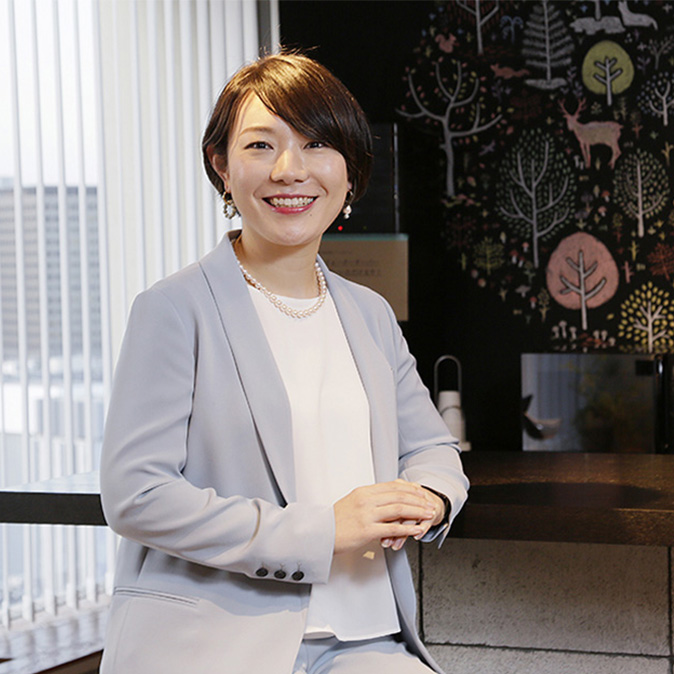- Viewpoints
- Research
Hakuhodo Branding & Innovation Design’s Youth Life Lab has a mission of co-creating with young people. Viewing them as a leading indicator for future society, the Lab hosts regular student conferences with around 20 undergraduate researchers, mostly students in the Greater Tokyo area. Each session explores a specific topic, collecting information on the latest trends and values among young people and discussing matters toward the future. Due to COVID-19, the most recent student conference was held online. We summarized the lives of young people during the COVID-19 crisis and their hopes for the future in 10 findings in five domains.
Communication and relationships
(1) Living together online: Lives in constant contact
During the self-isolation period, when it was difficult to go out and meet people face to face, opportunities to meet up online via video chats exploded for everyone, not just younger age groups. But among young people, many were staying online with good friends and partners for as much as ten hours or more a day, leading to the coining of the word “online dosei” (living together online). These extended video chats without a specific time for disconnecting are characterized by the sharing of an atmosphere together, with the parties sometimes not speaking, sometimes doing other things. Since prior to COVID-19, young people had been using apps to share their locations, post live stories, make their routines public and otherwise actively share information about themselves to draw comments and information of interest from others who share the same passions and this may now serve to further blur the line between public and private and the perception of privacy.
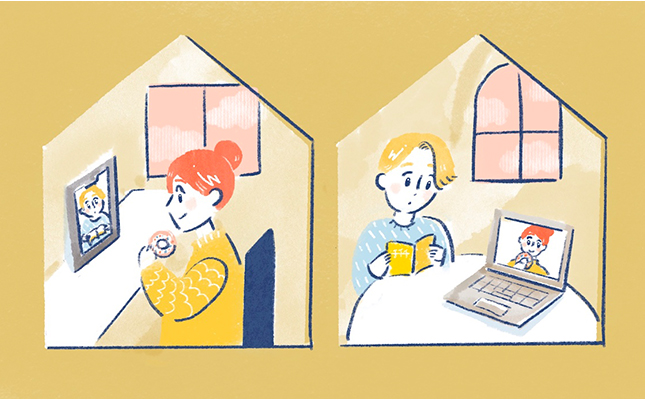
(2) The disappearance of “hey friends”: Weeding out personal relationships
University students started using the term “yottomo” a few years back. Meaning acquaintances they’re not particularly close with but will say “hey” to if they meet them on campus or around town, this kind of loose relationship has disappeared amidst self-isolation and the shift to online socializing that have resulted from COVID-19, with communication tending to be limited only to friends they hook up with regularly and for long periods online. With the April–May season—the beginning of the academic year in Japan—becoming the self-isolation period, parties to welcome new faces to campus groups and clubs were held online. But though online conversations between people that share deeper relationships go well, they tend to make becoming close to people who have just met difficult, so the effect of COVID-19 on young people’s interpersonal relationships cannot be ignored. While they will not be able to bring back young people’s “spring of new encounters,” new ways of creating encounters and loose relationships are probably needed.
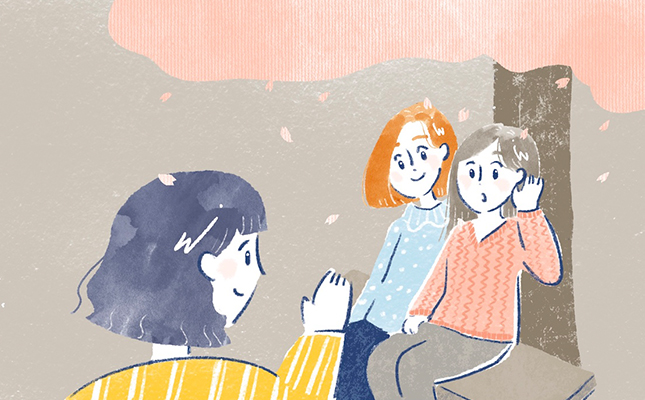
Senses and emotions
(3) Celebs are people, too: Sharing the senses is the key to creating unity
When asked if there were any good things to come out of COVID-19, responses included “My favorite celebs posting personally on social media and whatnot gave me insight into how they really live,” “A sense of solidarity from the whole world being in it together.” Because people were cut off from each other and not permitted to meet casually, they tried to generate unity through sharing many activities, such as getting excited about the same game, looking over stories from a year ago on social media, echoing each other’s “Likes” through online challenges and other viral tags. What is interesting was the discovery that rather than just connecting online, stimulating the senses at the same time by, for instance, cooking the same dish, drinking the same beverage, watching the same content and working out together, further enhances solidarity. Going forward, this discovery, which we had not noticed prior to COVID-19, will likely provide hints for overcoming social division and inform new kinds of entertainment.
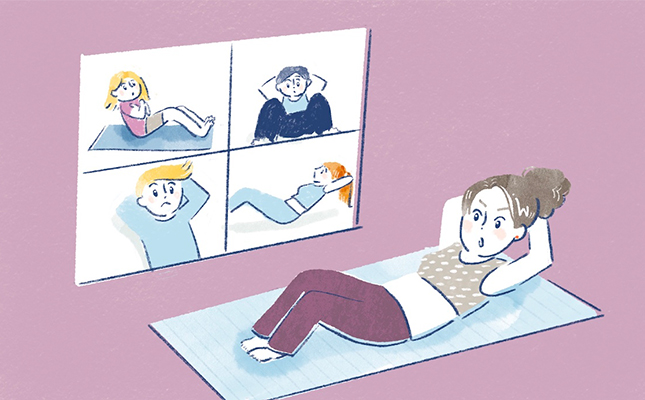
(4) The washing machine becomes a club: Young people making their own excitement
When discoveries such as “If you put a smartphone playing a video in the washing machine and stick your head in, it feels like you’re in a club*,” are shared on Twitter, young people all give it a go. The surprising creativity as work here is the result of young people trying to create the exciting experiences that were critically lacking as the COVID-19 self-isolation dragged on by themselves. Likewise, many young people began to “take over the veranda” by taking a chair out to eat or stringing up a hammock to enjoy the sensation of picnicking. While the kind of out-of-the-ordinary excitement obtained from such things as clubs, festivals and theme parks looks set to be out of reach indefinitely, how can we create it? This is a pressing issue for many young people, and looks set to lead to the spread of unexpected possibilities.
As we discussed such things in the conference, someone also mentioned that washing machines are the perfect height for a standing desk. Restrictions related to COVID-19 seem to be stimulating ideas for unexpected uses for things around the home. Considering that staying at home will continue for some time, how furniture, home appliances and space are used could be reconsidered further.
* Just one example of a tweet from a young person on Twitter. Not a recommendation to use washing machines this way.
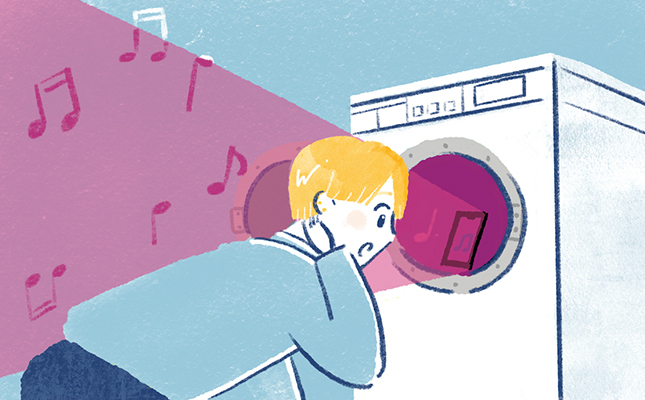
Self-awareness and self-expression
(5) My 16:9 self: The acceleration of on-screen self-expression
Classes, interviews and drinking parties have all moved online. This has led to the advent of tricks to express oneself and have fun within a 16:9 screen. With the importance of coordinating full outfits dropping, attention has shifted to earrings and shirts and blouses with cute collars, which can be seen onscreen. Some young people are researching makeup that looks natural and pops when online. Where they previously took portrait-oriented photos with a view to posting Instagram stories, now they take landscape-oriented pics to use as virtual background images. Some are using pictures of their favorite celebrities and anime images, introducing them as their virtual boyfriend or girlfriend. Behaviors such as these are spreading. Changes in the ways young people express themselves in all kinds of domains look set to spread, with some reporting: “Seeing my own face when I talk has enabled me to take a big-picture view of myself,” and “My reactions for other people’s benefit (due to the nature of online conversations) have become more exaggerated.”
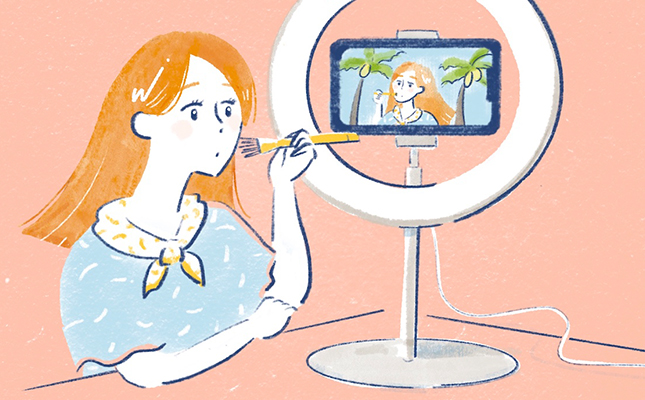
(6) I’m the protagonist now: Impetus for taking back control of their lives
During the period of self-isolation, young people had more time to use as they saw fit. At the beginning, there was a stage where they finally got to do things they were previously too busy to do, like decluttering, remodeling and putting away their winter wardrobes. After that, many young people started trying new things and things they did not feel able to previously due to worrying about what people would think, like out-there hairstyles, growing their facial hair, trying their hand at cooking and learning a musical instrument. One of the students that conducted the analysis said: “It was like I was always busy with things I had to do and somehow comparing myself to others, but now I’ve wrested back time to devote to myself.” It now feels like I am the protagonist of my own life.” Other members said: “I thought about what happens after death,” “I started reading a thick book on philosophy.” If having been given time to stop and turn their thoughts inward they have noticed what makes them happy and discovered their creativity, hope for the future, which is being called an age of subjectivity, will also grow.
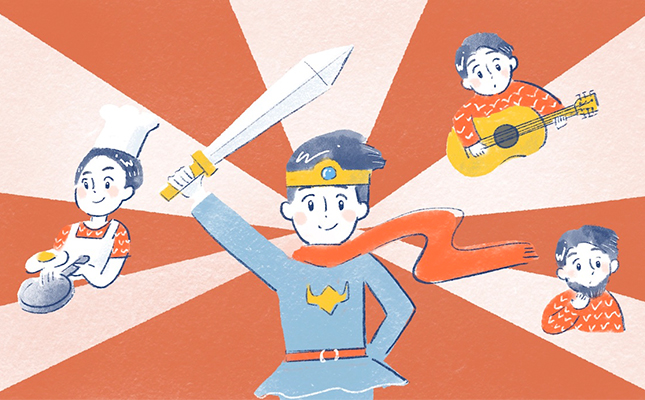
Perceptions of time
(7) Escaping “time performance”: Portents of change in perceptions of time
Studying the characteristics of young people’s behavior and values since before to the coronavirus, the Youth Life Lab has highlighted a high level of consciousness of “time performance” (information or experience volume per unit of time). Young people live in a world awash in information and where the future is hard to predict due to the dizzying pace of change. As such, rather than spending time on any one thing, doing many things simultaneously, at high speed, has been key. Multitasking by simultaneously watching a movie, eating dinner and posting on Instagram is completely natural to them, while having a second job, living in multiple places, and belonging to multiple communities speaks to a penchant for multitasking their lives as well. Maximizing time performance in this way has become a strategy for getting through this age. However, many young people who suddenly gained free time have started doing things that take time or require concentration, like reading books and sending handwritten letters, which they never would have considered before, and these experiences seem to have shown them the pleasure and importance of taking time to do something. Once things get as busy as they were before, doing these things might become difficult again, but this experience is very much likely to lead to young people changing their perceptions of time.
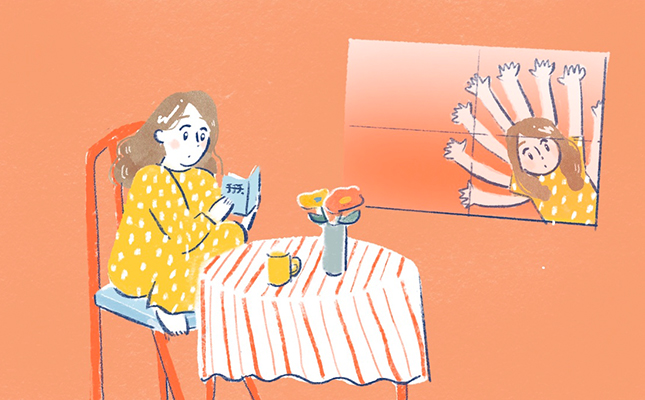
(8) The hunger for ebbs and flows: Desire for rhythms and plans
These three months have led to a polarization of young people into those who say that now that their once-busy lives have calmed down and they are able to control more things for themselves, they are better able to lead more orderly and healthy lives, and those who say that without train timetables and business start and end times, etc., and being in a space with a bed, they have tended to laze about and become unhealthy due to disrupted daily rhythms. While it depends mainly on personality, those young people that fall in the former group appear to be creating variety in their lives and generating their own rhythms. Examples include: “The experience of deciding a schedule for myself when working toward a goal, which I cultivated when studying for exams, has come back to me,” and “A friend and I share schedules and talk online and work out at the same time every morning.” Even among those in the latter group, which accounted for the better part of our conference members, many wanted to create rhythms in their lives by, for instance, looking into homeschooling schedules for kids studying at home in other countries. One had the following realization: “I used to eat tablet candies as a transition between classes and my part-time job, but I completely stopped eating them during self-isolation.” In a new environment, there may be a need for new variations of products and services for a change of pace and to change gears.
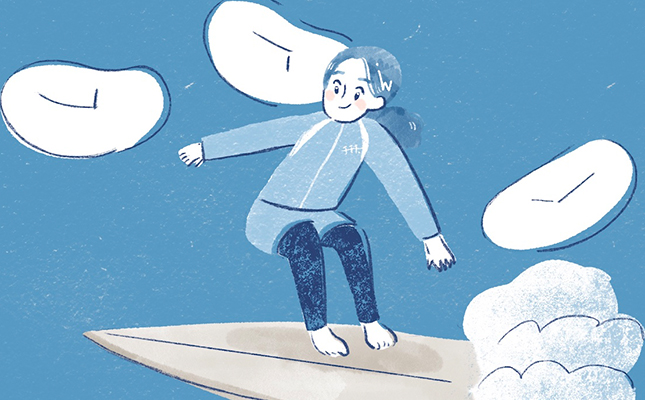
Consumption
(9) The home café: The experience of self-isolation changing purchase choices
During the self-isolation period the key word “ouchi café” (home café) trended on female students’ social media accounts and elsewhere. Many young people posted photos recreating stylish café menu items, including the trendy Korean export dalgona coffee and strawberry sandwiches, against background spaces that were also carefully curated. At the Youth Life Lab, too, many of our student members had jumped on board the ouchi café bandwagon or had started cooking, saying that these experiences will probably change what they look for in cafes and restaurants in the future. Comments like the following received a lot of agreement: “I feel like I’m going to spend what I would previously use on going out and eating out on staying home,” “I was surprised to realize I can cook more dishes than I thought, so when I eat out, I’ll want it to be more delicious and in a nicer space than I can recreate myself at home,” and “More than the flavor, I’ll now pay more attention to a restaurant waitstaff’s personalities and whether the service is good.” With opinions like, “I used to listen to music while commuting to university and when I was out and about, but listening at home, I was getting caught up in the fast tempo and Japanese lyrics, so I started listening to popular songs from Thailand, Taiwan and other countries on a music subscription service, and really enjoyed it,” it seems the experience of self-isolation could impact not just food, but standards for future behavior and purchase choices.
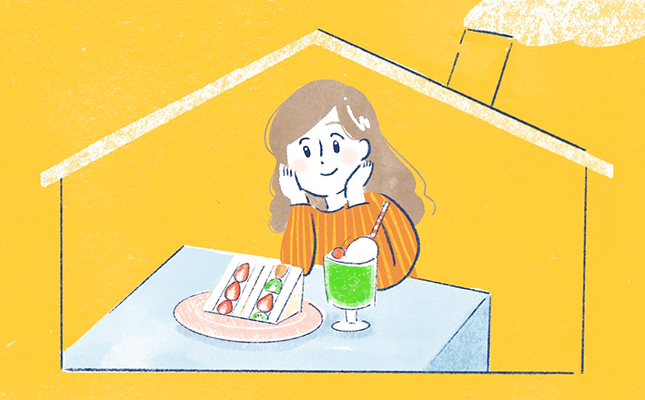
(10) The stay home blues: The spread of “self-love consumption”
While for some young people the self-isolation period was a trigger for fun and positivity, some of our student members reported being in a psychological condition that could be characterized as the “stay home blues.” The reasons for their sinking feeling were varied. Worrying excessively about contracting COVID-19 due to long exposure to the news. Increased financial worries from being unable to go to their part-time job. Suddenly being forced to return home from studying abroad, which they’d staked their life on. Losing their motivation when an event they’d put their heart and soul into was cancelled.
At the most recent conference, comments such as the following were highlighted: “Staying home during self-isolation, on the one hand everyone was battling to show themselves in their best light on social media, but on the other it was also impossible to escape social media while spending time at home,” and “Since posting negative things wouldn’t change anything, my mind was taken over by a sense of obligation and righteousness about posting positive things. It was exhausting.”
We heard news that people overseas had started to look to animals for comfort during the COVID-19 crisis, with baby chicks selling well and the rehoming of rescued cats and dogs increasing. But for young Japanese people living alone in the big city, such choices are not practical considering their homes and living environments. As we live lives where we’ll continue having to face new kinds of stresses, one key word that is likely to become even more important is “self-love consumption” to keep oneself in a good mood. Companies will need to use new ideas and technologies to provide products and services that keep people, including young people, healthy.
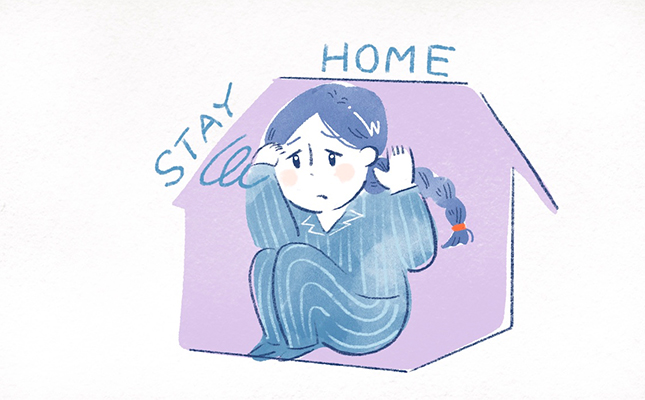
What do you think of our ten findings about the lives of young people during the COVID-19 crisis? Our discussions with young people made us realize that the impact of the novel coronavirus on their lives and values was greater than we expected. Some of the changes mentioned above may revert back to how they used to be as the virus situation returns to normal, but some will be here to stay. Afterall, even as this thing goes on, young people will be developing new ideas and behavior toward the ever-changing situation. Working with young people, we will continue to consider what companies and individuals can do to ease the suffering and solve the challenges that are emerging, and how to turn this situation into a positive opportunity for a better society.

Hakuhodo Brand & Innovation Design Youth Life Lab














